#transcontinental railroad
Explore tagged Tumblr posts
Text

Elephant Rock at Monument Point
This can be found along the former roadbed of the Central Pacific. The timetable lists the locale simply as “Monument”. We are twenty-one miles from Promontory Summit here.
Image by Richard Koenig; taken September 7th 2013.
#railroadhistory#railwayhistory#centralpacific#firsttranscontinentalrailroad#transcontinental railroad#monumentutah#utah
25 notes
·
View notes
Text
are transphobes mad that it’s the TRANScontinental railroad and not the CIScontinental railroad?
#lgbtq+#transgender#trans#transmasc#transcontinental railroad#Sorry I’m bored out of my mind taking history rn#So you guys get my bad jokes#the rats say something
5 notes
·
View notes
Text
currently reading After Promontory: 150 Years of Transcontinental Railroading
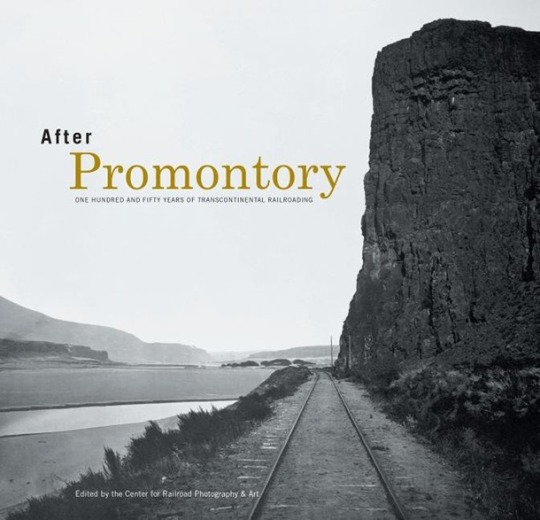
#after promontory#us history#transcontinental railroad#trains#currently reading#currently reading: after promontory#<<<for the blacklist :)
9 notes
·
View notes
Note
Favorite California history books? Any interesting books on California governors?
First of all, anything by Kevin Starr is a good place to start if you're looking for books on California history. I particularly recommend California: A History (BOOK | KINDLE) for an overall history and Coast of Dreams: California on the Edge, 1990-2003 for a more modern perspective.
Jim Newton's book Man of Tomorrow: The Relentless Life of Jerry Brown (BOOK | KINDLE) is probably the best biography I've read about one of California's most influential Governors. Lou Cannon's Governor Reagan: His Rise to Power (BOOK | KINDLE) is an excellent look at the future President's early political career and eight years in Sacramento.
Mark Arax has written some really insightful books about California's history, culture, and politics, especially West of the West: Dreamers, Believers, Builders, and Killers in the Golden State (BOOK | KINDLE), and The Dreamt Land: Chasing Water and Dust Across California (BOOK | KINDLE).
While they aren't solely about California, I'd also suggest these books, which help tell some of the more important aspects of the story of California: Kearny's March: The Epic Creation of the American West, 1846-1847 (BOOK | KINDLE) by Winston Groom; The Crusades of Cesar Chavez: A Biography (BOOK | KINDLE) by Miriam Pawel; and, Cesar Chavez: Autobiography of La Causa (BOOK | KINDLE) by Jacques E. Levy.
There's another question in my inbox asking for book suggestions about Sacramento, so I'll include those in this answer. Sacramento: An Illustrated History, 1839-1874: From Sutter's Fort to Capital City by Thor Severson is an older book, but really solid about Sacramento's early history. Fool's Gold: A Biography of John Sutter by Richard Dillon, John Sutter: A Life on the North American Frontier by Albert L. Hurtado, and The Associates: Four Capitalists Who Created California (BOOK | KINDLE) by Richard Rayner are good biographies about some of the most important founders of Sacramento.
And you can't tell the story of Sacramento or California (or, really, the United States) without the construction of the transcontinental railroad, so I'd also highly recommend Nothing Like It in the World: The Men Who Built the Transcontinental Railroad, 1863-1869 (BOOK | KINDLE) by Stephen Ambrose, and Empire Express: Building the First Transcontinental Railroad (BOOK | KINDLE) by David Haward Bain.
#History#Books#Book Suggestions#Book Recommendations#California#California History#Sacramento#Sacramento History#Jerry Brown#Governor Brown#Ronald Reagan#Governor Reagan#Transcontinental Railroad#John Sutter#Mark Arax#Kevin Starr
18 notes
·
View notes
Text

"LOCOMOTIVE OF C.P.R. IMPERIAL LIMITED IS THROWN INTO LAKE," Winnipeg Tribune. November 21, 1913. Page 1. ---- Fireman O'Connor, of Schrieber Drowned When Train Hit Rock Near Angler, Ont. ---- ENGINEER SAVED LIFE BY JUMPING --- Official Report Says That Only Baggage Car Left the Track and Mail and Passenger Cars Were Unscathed ---- While tearing along the eye-brow of a beetling cliff that overhangs Lake Superior, 178 miles east of Fort William, at 2 a.m. this morning, the first section of the C.P.R, westbound Imperial Limited, crashed into a gigantic boulder which had hurtled down on to the track from far up the precipitous cliff side. The engine was hurled from the steel into the charm of waters be neath, carrying in its mangled mass to a watery grave beneath, the living form of Fireman Ernest O'Connor, of Schreiber. The engineer escaped miraculously as the train struck, but his warning cry to his fellow workman was too late.
Luckily the engine broke away away from the rest of the train ere it plunged into the murky waters fur below. Three cars only left the track and the train held the foremost from following the engine into the lake which surged angrily fifty feet beneath. No one else was injured and in any case the death rate could not have been high as the train was composed only of transcontinental mail, express and baggage with a first class passenger couch at the rear occupied by but one man. There were. however, besides the engine crew, a conductor, two brakemen, a mail clerk and baggage and express agents on the train.
A Glancing Impact The impact of the train against the boulder was terrific, but its full force was not sustained by the cars owing to the fact that the force of the collision was sustained by the side of the train facing the cliff. This forced the engine over the lower cliff, but probably saved the whole whole train from being w reduced to splinters and being hurled in fragments against the rock on the one side or into the lake on the other. Had this happened many more fatalities must have resulted. Had the accident befallen the second section which was careening through the darkness a hundred miles behind and had the boulder been dead centre on the track one of the worst disasters in the history of Canadian railroads would have occurred.
A Wild Spot The section of the track in which the disaster occurred is one of the wildest and most picturesque on the whole Canadian Pacific railway through mountains, barren lands or prairies. prairie The track is built on a ledge of rock half-way up the cliff side. On the one side towers and frowns a solid wall of rock rudely torn by dynamite, while on the other is a sheer descent of fifty feet into the murky waters of of the largest inland sea in the world. The name of the town near which the accident occurred is Coldwell and it is on the Trans-Continental.
#schreiber#northwestern ontario#lake superior#transcontinental railroad#derailment#train derailment#industrial accident#fatal accident#canadian pacific railway#railway workers
3 notes
·
View notes
Text
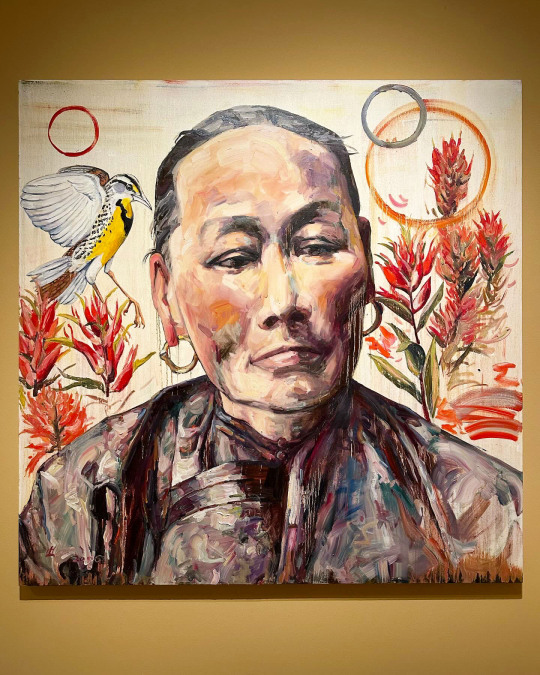
(Hung Liu “Portrait of China Mary”, 2006, Oil on canvas)
Currently at The James Museum in St. Pete, is From Far East to West: The Chinese American Frontier, an informative show that includes many beautiful paintings. There’s so much history in America that often doesn’t get taught in school. This is a great opportunity to learn about this immigration story through artwork as well as text.
From the museum about the exhibition-
While European American settlers gradually pushed the United States frontier westward throughout the 1800s, the West coast of the country was developing independently as well. Accelerated by the discovery of gold mid-century, the population boom included Chinese immigrants who crossed the Pacific Ocean to California.
Most 19th century Chinese immigrants came to their new country from the coastal Canton region (province of Guangdong today) in southeastern China. Starting over on a different continent away from familiar surroundings and culture would be challenging, but for many decades anti-Chinese hostility and exclusion laws made settling in the United States even more difficult. The achievements of Chinese immigrants paved a path for future generations and are a testament to strength and perseverance.
The foundation for the exhibition highlights narratives of Chinese America from the 1850s to the 1930s. The paintings-all created by Chinese Americans in the 21st century-reflect inspiration from this history. The painters are also fueled by their own, more recent immigration stories to the United States after China’s Cultural Revolution (1966-1976) and their rigorous art training in the government-sponsored movement of Socialist Realism. After China opened to the rest of the world in the late 1970s, many Chinese artists-like Mian Situ, Jie Wei Zhou, Benjamin Wu, Hung Liu, and Z.S. Liang, all featured here were inspired to immigrate to the United States in search of greater opportunity.
Here, these artists’ historical interpretations speak to culture, identity, community, and resilience. Related objects and ephemera from the period support these stories. From the Gold Rush to Angel Island, this exhibition reveals often overlooked but significant contributions and perspectives of Chinese immigrants that deepen our understanding of U.S. history.

Hung Liu “Dandelion with Small Bird”, 2017 Mixed media
About the above painting from the museum-
Dandelions and their fluffy seed pods can be found anywhere in the world and thrive wherever they land. Their migratory nature allows them to survive a journey across vast lands even across oceans and take root anywhere in the world. For Liu, the dandelion represents her own tenacity and ability to thrive in the face of adversity.
The dandelions, fragile in nature and tattered by the lightest breeze, mimic how images, and personal narratives, too, can be scattered by time and the winds of history —as well as by the rhythms of feast and famine … –Hung Liu
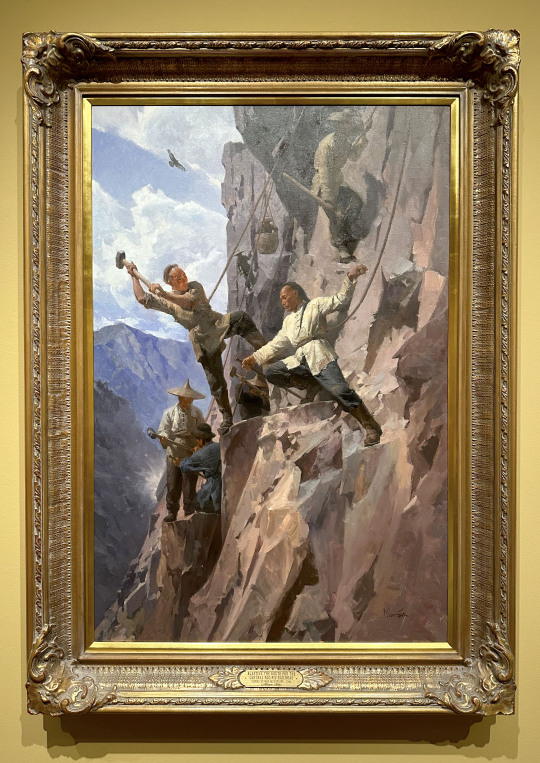
Mian Situ “Blasting a Route Through the Sierra Nevada, 1865, Central Pacific Railroad”, 2018, Oil on canvas

Mian Situ “The Gold Seekers , Chinese Camp, 1850”, 2015, Oil on canvas

Jie Wei Zhou “Dragon Parade”, 2012, Oil on Linen
This exhibition is on view until 1/28/24.
#Art#The James Museum#Hung Liu#Art Shows#Chinese American History#Mian Situ#Chinese Americans#Florida Art Shows#Gold Rush#Jie Wei Zhou#Z.S. Liang#Benjamin Wu#St. Pete Art Shows#The James Museum of Western and Wildlife Art#Historical Painting#History#Immigration#Painting#Transcontinental Railroad
4 notes
·
View notes
Photo
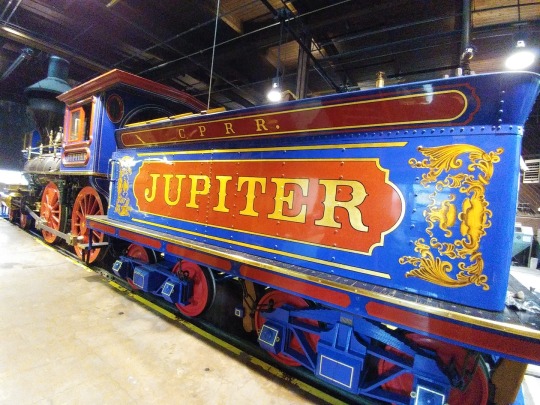
Central Pacific No. 60 Locomotive
The Jupiter was a 4-4-0 steam locomotive owned by the Central Pacific Railroad. It made history when it joined the Union Pacific No. 119 at Promontory Summit, Utah, during the Golden Spike ceremony commemorating the completion of the First transcontinental railroad in 1869.
#locomotives#historic locomotives#historic moments#transcontinental railroad#central pacific railroad#jupiter#trains#visit promontory#travel america#travel photography#traveling#visit utah#utah attractions#muttball
4 notes
·
View notes
Text
#united states#american history#immigration#immigration crackdown#chinese immigrants#transcontinental railroad#us west#history
0 notes
Text
A Mournful Whistle Recalls the Storied Past of a Massive Steam Locomotive
If you grew up hoping for a return wave from a train engineer or the brakeman on the caboose, as I did, you might want to make a special effort to view this historic steam locomotive on its 2024 tour. Or at least read about its history.
#Big Boy 4014#Freight Trains#Steam Locomotive#Trains#Transcontinental Railroad#Union Pacific Railroad
0 notes
Text

Most depictions of Chinese transcontinental railroad workers have a bunch of humble looking guys in conical straw hats all wearing the same baggy shirt carrying buckets or dynamite or whatever.
I love that this one has this dude who is HELLA JACKED swinging a sledgehammer the force of which sends his queue flying into the air. Dude next to him in Mr T's vest armed with guns for days while smoking a pipe. 10/10.

#transcontinental railroad#representation#trains#chinese americans#chinese american history#asian americans#asian american history#hella jacked
1 note
·
View note
Text
Palisade Nevada
Located along the banks of the Humboldt River in Eureka County lies the remains of a railroad town critical to the construction of the Transcontinental Railroad. The townsite was named for Palisade Canyon and located west of town. The narrow canyon is a major barrier in the construction of the railroads. The townsite was plotted in 1868 and served as a train station for the Central Pacific…

View On WordPress
#Central Pacific Railroad#Eureka and Palisade Railroad#Eureka County#Herbert Hoover#Nevada#Nevada State Historic Markers#Nevada State Route 278#Railroad#Transcontinental Railroad#Western Pacific Railroad
0 notes
Text
We talk about the rapid change of technology now. But since Industrialization, that's just how it is.
In 1847, white people going from Iowa to California had to do it in wagons, and whether you made it or not in 6 months was 100% contingent on the weather and how fast you could reload a flintlock. By 1869 they has finished the Transcontinental Railroad, and for 4 days you could massacre buffalo with a repeater rifle from the window of a train over the mountains.
That's 22 years. That is the same amount of time I experienced between watching the first Matrix movie and the big screen adaptation of Dear Evan Hansen.
I mean, there was other more significant stuff that happened between those two movies. But I think you get the point.
...There was also some more significant stuff that happened in America between 1847 and 1869, honestly.
Look. Can I do ONE POST without mentioning 1.6 million dead people?? Jeez.
1 note
·
View note
Text
Dragon Book Cover Makeover: THE THOUSAND CRIMES OF MING TSU
Every Monday, my grumpy dragon Windsor takes over my blog to give books a much needed dragon makeover. This week, Windsor is giving one of my favorite books from 2021 a makeover: The Thousand Crimes of Ming Tsu by Tom Lin. As I’ve said, this is one of my favorite books from 2021. It starts off as a straightforward “Old West” novel, but not far into the story, things take more of a “Weird West”…
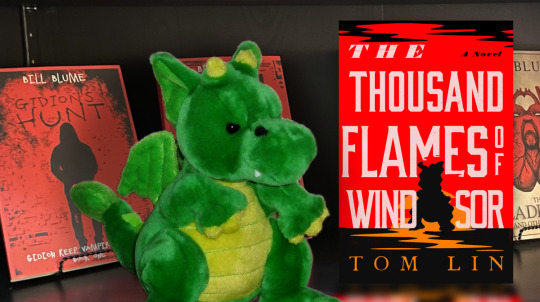
View On WordPress
#book cover#book covers#dragon#Dragon Book Cover Makeover#grumpy dragon#magical realism#Ming Tsu#old west#The Thousand Crimes of Ming Tsu#Tom Lin#transcontinental railroad#weird west#western#Windsor
0 notes
Text
Yep and another important thing is that standard gauge was not widespread in the US until after the civil war as the first transcontinental railroad helped gauge standardization as many Railroad's had been built to Erie Gauge (6 feet) however a large chunk of Railroads in the Western US, Alaska, and Hawaii were built to half that at 3 foot Gauge (sometimes called Yard Gauge or Colorado Gauge) although of course by the 1960s most of the Narrow gauge was either regauged or abandoned with some going on to become Tourist and Heritage Railroads
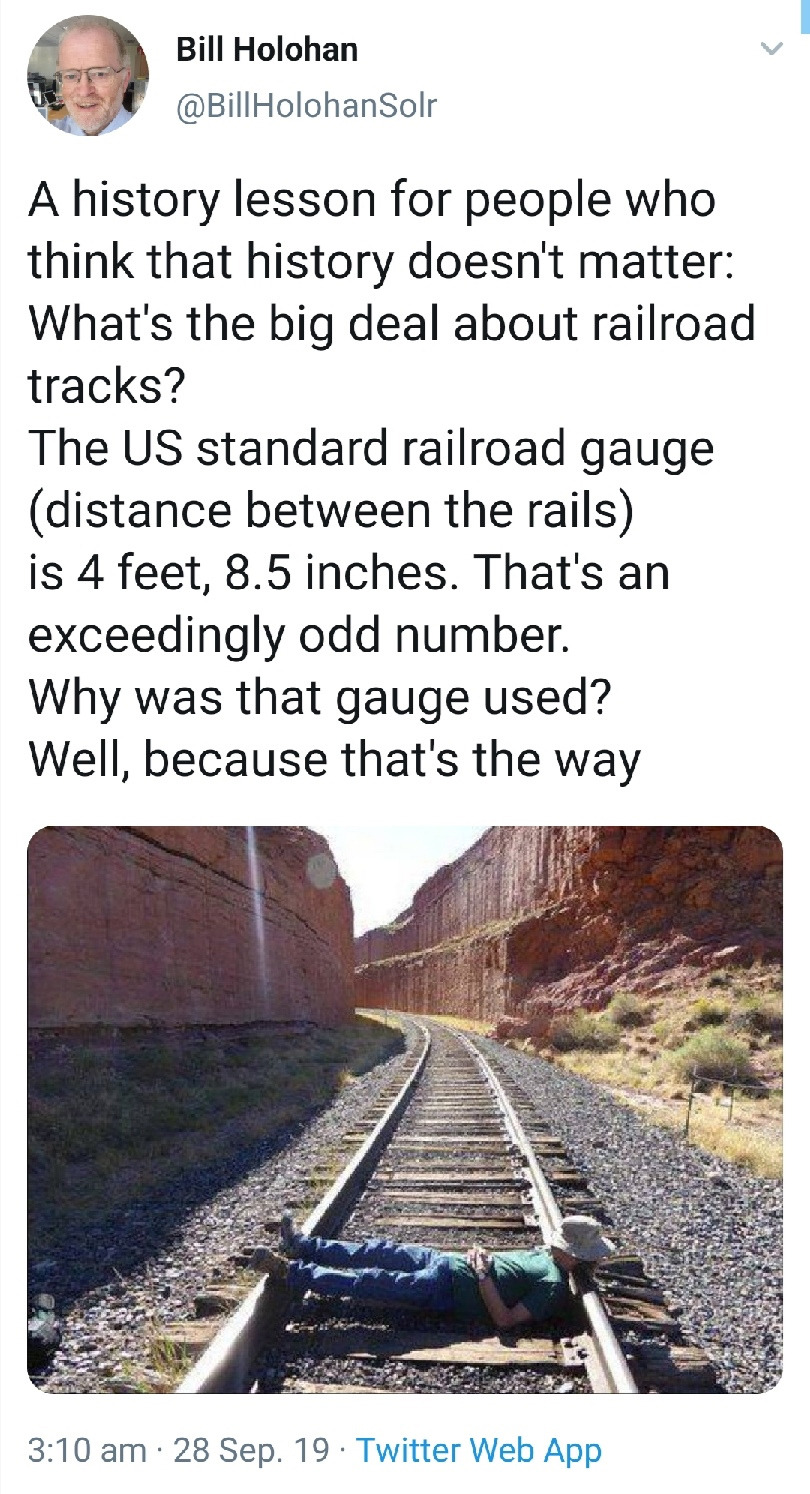
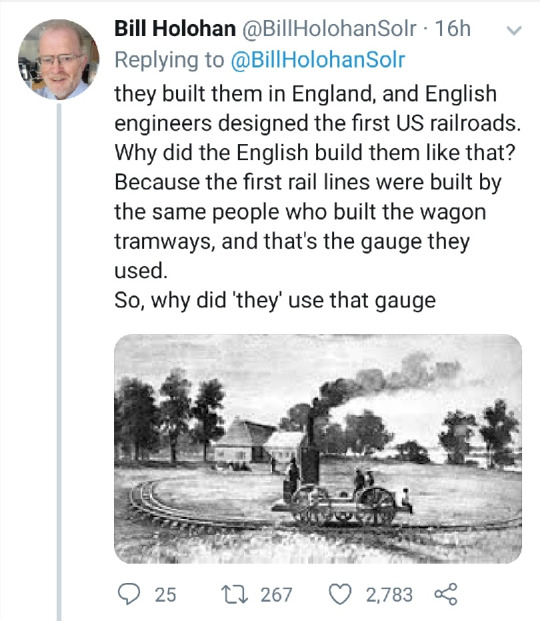

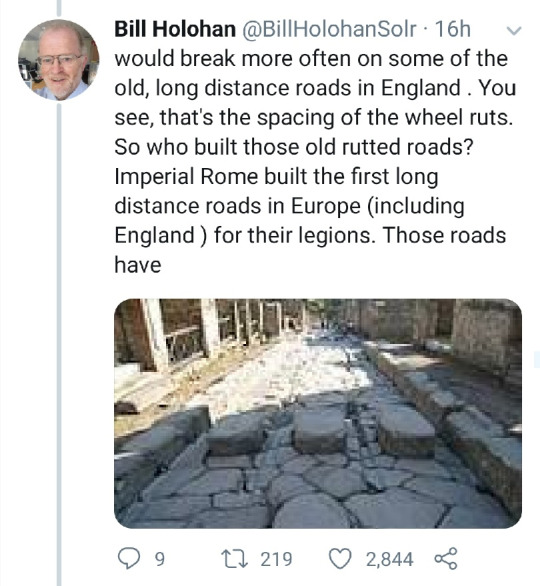
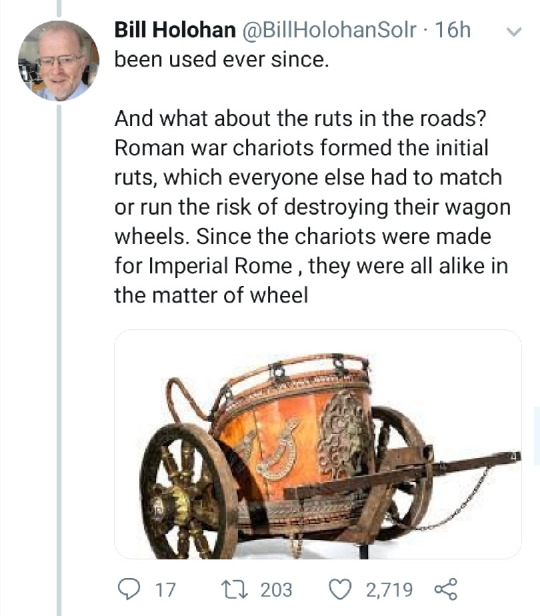

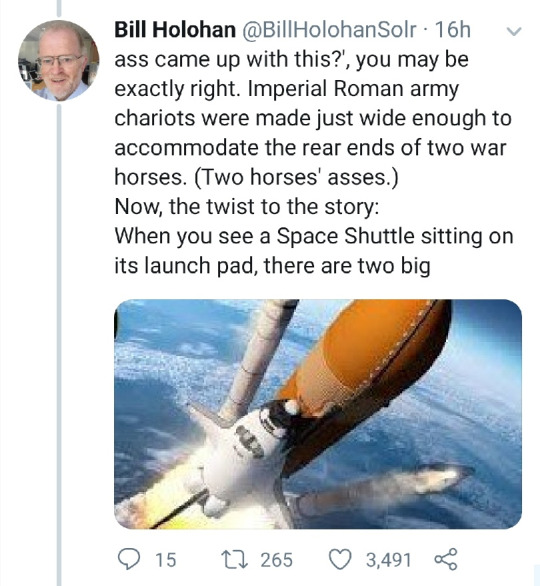
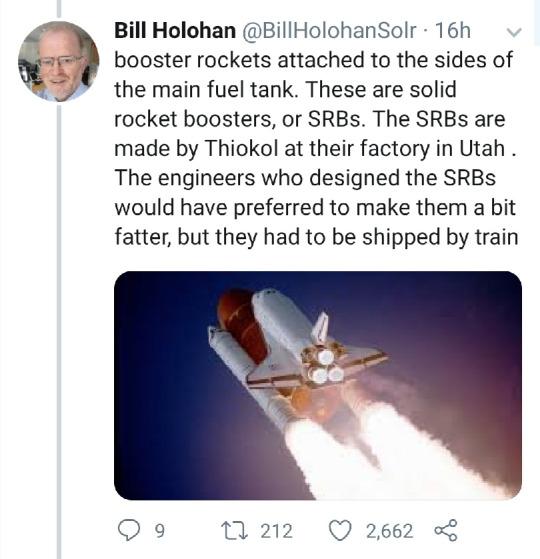
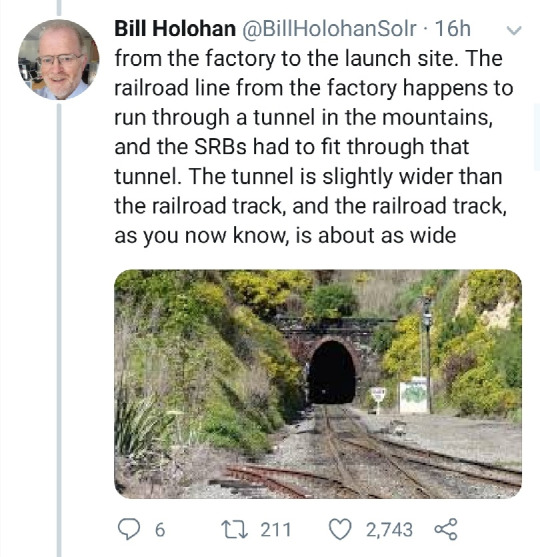
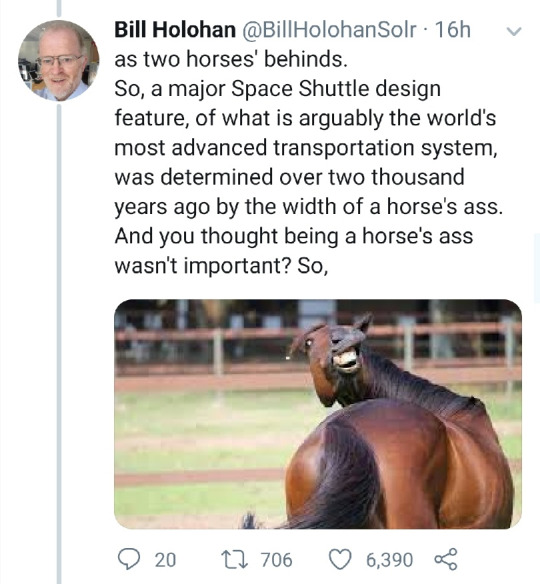

#trainposting#Colorado narrow gauge#track gauge#transcontinental railroad#industrial history#correcting misinformation#roman chariot gauge myth#Denver & Rio Grande Western#rio grande#d&rgw#alaska railroad
157K notes
·
View notes
Photo

Union Pacific No. 119
Union Pacific No. 119 was a 4-4-0 steam locomotive made famous for meeting the Central Pacific Railroad's Jupiter at Promontory Summit, Utah, during the Golden Spike ceremony commemorating the completion of the First transcontinental railroad in 1869.
#historic locomotives#historic event#locomotives#steam locomotivve#visit promontory#utah history#transcontinental railroad#travel photography#muttball
6 notes
·
View notes
Text
The US railroad is transcontinental?? Congrats on its transition!!
857 notes
·
View notes